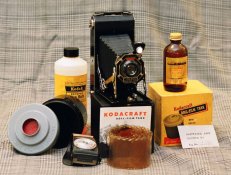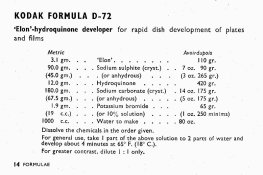In my previous post D75 should read D76.
Now, as for Dektol. It is used as a film developer when one is not overly concerned with grain. This mainly applies to processing film negatives. And, this use started with the newspaper industry when they found that Dektol with Super XX film using a 1:3 dilution for 3' or a 1:7 dilution for 7' gave negatives that could be printed in newspapers with good detail even though the original was rather poor. The printing process kind of decreased grain and de-emphasized sharpness.
So, amateurs today, seeing that practice, latched on to it, as it is a quick and easy (dirty) way to use 1 developer to get a film negative and prints as well.
So, yes it can be done but the highest quality is not gained.
Now, for reversal the situation is different in that the final grain is determined by the second developer. Sharpness is divided up between the two developers and so it can be a wash here for Dektol as first developer.
I always say, "use what works for you". In this case, without a side by side comparison, Dektol appears to (and does) work but may not be the best solution.
David Vestal and Al Weber both teach this method in their workshops with the same cautionary notes that I have made here. I trust them both implicitly.
PE


 .
.




